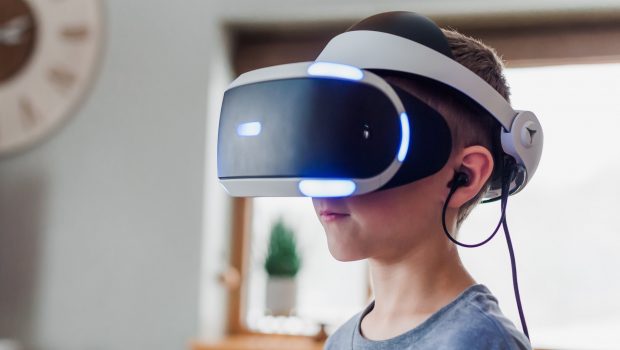Real world education in the virtual realm
When many parents are wanting to pull their children away from computer screens, or office workers are urged to take more screen breaks to give their eyes a rest, the idea of donning a virtual reality (VR) headset might not initially appeal.
Immersive classrooms
But, as revealed in a recent report published by The AI Journal, VR’s capacity to teach, to allow students to have experiences beyond the limits of their physical world, to train staff, and to work remotely with colleagues in a shared virtual space has seriously beneficial ramifications in the real world.
VR content can revolutionise education. More schools around the world are adopting the technology, using kit in the classroom to give pupils otherwise-impossible experiences.
They could be transported to the Great Pyramid, or visit the ruins of Roche Abbey in Yorkshire, taking students on virtual field trips to destinations tens of thousands of miles away. VR is clearly a financially less burdensome alternative to a real-life field trip.
In the US, classroom VR is starting to merge with curricula, with the likes of open platform ClassVR allowing students and teachers to create, upload and share their own content across a collaborative online community.
One stand-out advantage of using VR in education is that direct (albeit simulated) experience has been proven to be a more engaging means of communication than reading a textbook.
“VR content is typically viewed on a headset, via a phone, but for schools, it can even be projected onto a wall to create an immersive classroom, allowing children to be transported but still able to interact with one another”
VR content is typically viewed on a headset, via a phone, but for schools, it can even be projected onto a wall to create an immersive classroom, allowing children to be transported but still able to interact with one another.
As students mature and move into secondary education, they inevitably become more independently-minded, and hence VR headsets are a more popular route to virtual reality than the immersive classroom.
VR is also a powerful medium for teaching kids with learning difficulties, allowing them to learn about aspects of the world in a totally controlled environment; for example, children with neurodiverse conditions such as autism can be taught about road safety in a secure setting that’s free from harm.
The reality of virtual skills
One of the earliest manifestations of VR was as a training tool for US pilots, thanks to its ability to take a rookie and transport them into the skies, and the technology continues to be used today to train flyers.
But VR is being used today to train people for more earthbound, mundane tasks in a risk-free virtual space.
This can include safety training in a virtual representation of a potentially hazardous environment, teaching new staff how to operate complex machinery without the risk of damaging expensive equipment, or enabling surgeons to finesse intricate, and potentially life-threatening, medical procedures.
The fact that consultancy giant PwC has written a recent report on the use of VR for soft skill training, and that its Emerging Technology Group has explored the business value of VR for several years, speaks volumes about its efficacy for businesses.
In 2019, PwC published its Seeing is Believing report and predicted that VR and AR have the potential to add US$1.5 trillion to the global economy by 2030.
For PwC, the most appealing applications for the technology are for training leadership, soft skills and other human-to-human interactions. Its research found that virtual learning was more effective than classroom learning, that virtual learners were 275% more confident to act on what they’d learnt (a 40% improvement vs the classroom); that they were four times more focused than in e-learner training; completed training up to four times faster than in the classroom; and were 3.75 times more emotionally engaged to content than classroom learners.
What’s not to love about that?
You might also like: Future of international student admissions: interactive, personalised and backed by technology








Gloss